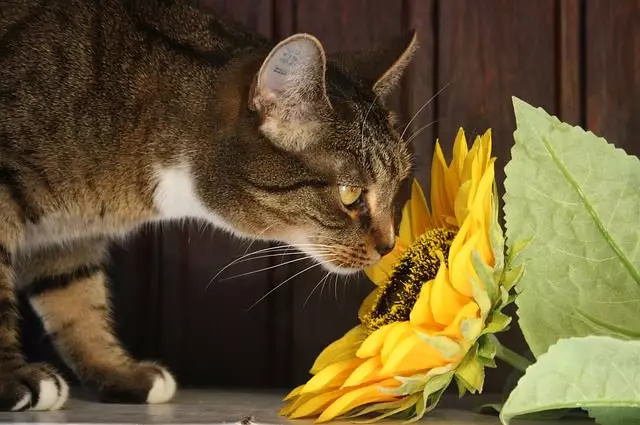Living harmoniously with cats and plants can be a rewarding experience, yet it carries a certain responsibility. Many pet owners are not fully aware of the dangers lurking in their gardens or within their homes. While indulging in floral beauty can uplift our spirits, it’s crucial to recognize that not all vegetation is safe for our feline companions. This guide details common plants that pose health risks to cats, ensuring both your home and your pets remain safe.
Cats are naturally curious creatures, known for their playful exploration of their environment. This inclination often puts them at risk of ingesting harmful substances. The ASPCA provides a comprehensive overview of plants that are toxic to various pets, including cats. Their awareness can prevent potential health emergencies. However, this isn’t just about awareness; it’s about taking proactive measures to safeguard our furry friends. Preparing for the unexpected includes tracking the nearest veterinary emergency numbers or having them saved in your phone for quick access.
Here’s a detailed look at 15 plants widely recognized for their toxicity to cats, along with the potential consequences of ingestion:
1. Apple (parts): Though the apple flesh is safe, the seeds and other parts contain cyanide, which can be harmful if eaten.
2. Aloe Vera: While aloe is a common remedy for humans, it can cause vomiting in cats, along with lethargy and diarrhea.
3. Azaleas: These beautiful flowers can lead to severe symptoms, ranging from vomiting to potential heart failure.
4. Lilies: This family of flowers is especially treacherous for cats. Just a nibble can lead to acute kidney failure.
5. Chamomile: Despite its calming effects on humans, chamomile can induce vomiting and other adverse symptoms in cats.
6. Daffodils: The bulbs of these flowers are particularly dangerous, causing severe health issues such as convulsions and cardiac arrhythmias.
7. Daisies: Symptoms from ingesting daisies can include vomiting, diarrhea, and even dermatitis.
8. Geraniums: These popular ornamental plants are not safe; ingestion may cause vomiting and depression.
9. Gladiolus: The bulb of this plant also holds the most toxicity, which can result in a range of distressing symptoms.
10. Tulips: Similar to daffodils, the bulbs are the most toxic part, with symptoms comprising vomiting and lethargy.
11. Sago Palm: Ingesting any part can lead to deadly consequences, including liver failure and severe gastrointestinal distress.
12. Oleander: Highly toxic to both cats and humans, oleander can cause extreme drooling and even death.
13. Rhubarb: This favorite pie ingredient can lead to kidney complications if ingested by pets.
14. Philodendron: Exposure can result in oral irritation and excessive drooling.
15. Mistletoe: Especially hazardous during the holiday season, mistletoe can cause various symptoms, including difficulties in breathing.
While the list above may seem daunting, preventive measures can assure a safer coexistence with plants. Start by conducting a thorough inventory of your home and garden plants. Consider replacing toxic species with pet-friendly alternatives. For any new additions to your plant collection, doing a quick online check can save significant distress later on.
Regularly educate visitors about the household plants that may pose risks to pets. That awareness can extend to friends and family, ensuring your home remains a safe haven for your feline friends.
A Loving Environment for All
Creating an environment where both cats and plants can coexist involves ongoing vigilance and education. By understanding the dangers present in our greenery, we can take steps to ensure a safe space for our furry companions. The joy of gardening and the presence of nature in our homes can still flourish, provided that awareness accompanies it. After all, the health and happiness of our cats should always come first.


Leave a Reply